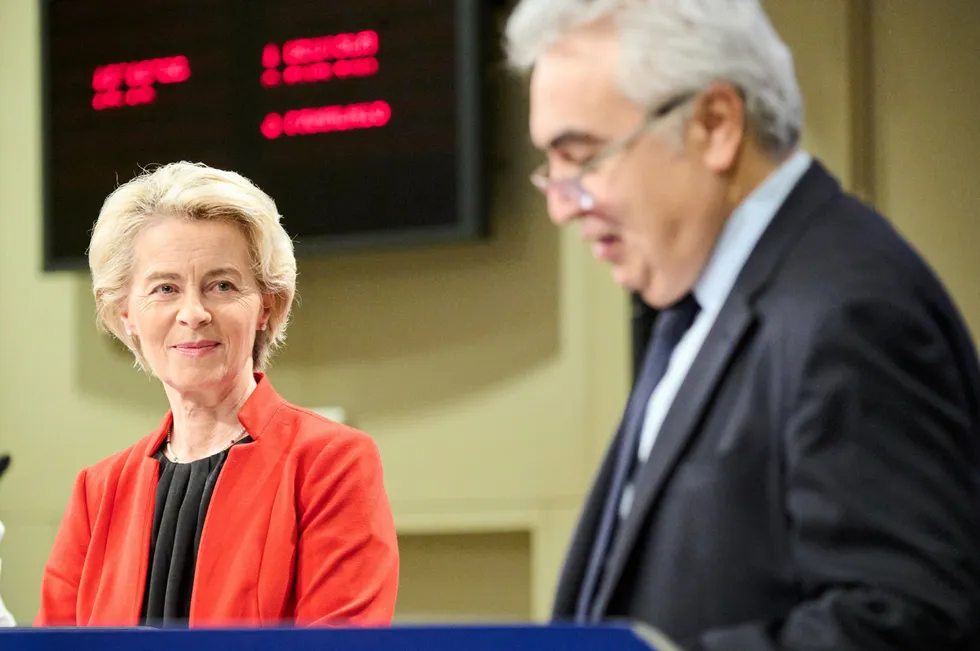IEA: Differing national clean hydrogen standards may become a barrier to international H2 trade
But the International Energy Agency is not recommending globally recognised rules for green or blue hydrogen production

Hydrogen: hype, hope and the hard truths around its role in the energy transition
The Paris-based organisation says that different rules on carbon intensity, regulatory frameworks and certification systems defining the “sustainability attributes” of hydrogen may lead to market fragmentation.
It argues that emissions intensity of hydrogen production, “based on a joint understanding of the applied methodology used for regulation and certification, can be an important enabler of market development... [and] is a first step to enable interoperability”.
“An internationally agreed emissions accounting framework that provides common definitions for hydrogen production can bring much-needed transparency to facilitate adoption and scale-up,” the report explains.
“A common framework can enable investment and trade by facilitating market and regulatory interoperability. Without such a framework, producers and consumers face challenges in assessing the technical criteria that allow their products to meet regulatory requirements, which can increase investment risks and lead to a fragmented market.”
As the paper points out, only 4% of announced low-emission hydrogen projects so far announced globally are under construction or have taken a final investment decision, at least partly due to “the lack of clarity in regulatory frameworks and certification schemes”.
This lack of clear definitions is also holding up the handing out of subsidies, which in turn is delaying final investment decisions on projects.
Setting these definitions is proving to be a painstaking, complex process.
And the EU is insisting that all imported green hydrogen meets Europe's own rules and regulations.
But the IEA is not recommending a globally recognised upper limit for acceptable emissions intensity for hydrogen production.
“Governments should define roadmaps to decarbonise hydrogen production, both domestic and imported, in accordance with their national circumstances,” it says.
“This report therefore does not provide a generic acceptable upper threshold for the emissions intensity of hydrogen production.
“However, governments should take into account factors such as emissions intensity, supply volumes and affordability to inform decision-making to scale up production and use of low-emission hydrogen.”
It adds that additional sustainability criteria, such as energy sources, land and water use, and working conditions can also be incorporated into regulations and certification schemes.
“The use of emissions intensity is a first step to enable interoperability, but should not preclude governments and companies incorporating additional criteria,” the report explains.
“The use of ‘product passports’ can help to bring all these criteria together, as well as to standardise processes, minimise costs and maximise transparency.”
The IEA describes a “product passport” for cargoes of hydrogen as “a unique ID connected to a data repository accessible to trading partners and end users”.
“The accessible data could include the emissions intensity rating... as well as other certificates, assessments or information on environmental and socio-economic considerations.”
Additionality and temporal correlation
“Additionality” refers to a requirement for new green hydrogen projects to be powered by new (ie, additional) renewable energy projects.
This is because using existing wind or solar facilities to produce renewable H2 would consume clean electricity that would otherwise used by the grid, which would likely have to be replaced by gas- or coal-fired power, and thus increase overall carbon emissions.
“Temporal correlation” refers to the timing of how intermittent renewable energy can be used to power electrolysers. The more hours per day an electrolyser — which uses an electric current to split water molecules into hydrogen and oxygen — is in operation, the cheaper the H2 produced.
But the wind and solar power generally required for green hydrogen production is variable. So some developers would like to take electricity from the grid when the wind isn’t blowing or the sun isn’t shining, and then send the same amount of renewable energy back to the grid when wind turbines and solar panels are generating more electricity than the electrolyser needs. But this raises similar questions about gas- and coal-fired power being required to replace that clean energy from the grid.